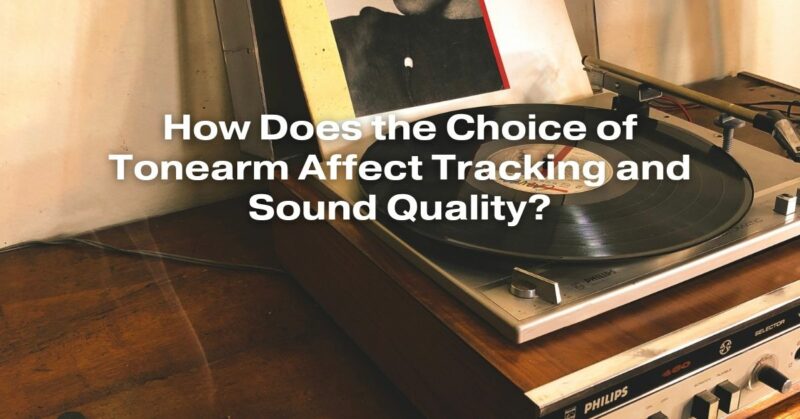The world of vinyl records is as much about science as it is about art. Audiophiles and music enthusiasts often spend considerable time and effort in selecting the right turntable, cartridge, and speakers to enhance their listening experience. One critical component that plays a pivotal role in the quality of sound reproduction is the tonearm. This article explores the intricacies of tonearms, delving into how their design and choice can significantly affect tracking and sound quality.
Understanding the Basics
Before delving into the impact of tonearms, it’s crucial to understand their primary function. A tonearm is the part of a turntable that holds the cartridge and allows it to trace the grooves of a vinyl record. Its main purpose is to provide the necessary support and stability to ensure accurate tracking, translating the physical grooves on the vinyl into an electrical signal that can be amplified into sound.
Different Types of Tonearms
Tonearms come in various designs, including straight, S-shaped, and linear tracking tonearms. Each design has its advantages and disadvantages concerning tracking and sound quality.
- Straight Tonearms: These tonearms provide a direct and simple approach to tracking, minimizing tracking errors. They offer a more direct path for the cartridge, reducing resonance and distortion.
- S-shaped Tonearms: S-shaped tonearms are popular due to their ergonomic design. They minimize tracking errors and reduce inner-groove distortion, making them a common choice for many audiophiles.
- Linear Tracking Tonearms: Linear tracking tonearms move parallel to the record groove, ensuring the stylus always hits the optimal angle. This design significantly reduces tracking errors but is often complex and expensive to manufacture.
Impact on Tracking
Tracking refers to the ability of the tonearm and cartridge to follow the intricate grooves of a vinyl record accurately. The choice of tonearm greatly influences tracking ability. A well-designed tonearm with minimal resonance and low mass can significantly reduce tracking errors, ensuring that the stylus stays precisely in the groove even during complex musical passages.
Impact on Sound Quality
The impact of tonearms on sound quality is profound and multi-faceted:
- Reduced Distortion: A high-quality tonearm minimizes resonance and vibration, reducing distortion and ensuring a cleaner, more accurate sound reproduction.
- Improved Dynamics: A well-engineered tonearm can enhance the dynamics of music, capturing subtle details and nuances that might be lost with a subpar tonearm.
- Enhanced Frequency Response: The right tonearm can offer a broader frequency response, ensuring that both low and high-frequency sounds are reproduced faithfully.
- Reduced Inner-Groove Distortion: Inner-groove distortion, a common issue in vinyl records, can be mitigated with the proper tonearm design. S-shaped tonearms, for instance, are known for minimizing this distortion, providing a more consistent sound quality across the entire record.
Considerations When Choosing a Tonearm
When choosing a tonearm, several factors must be taken into account:
- Cartridge Compatibility: Ensure the tonearm is compatible with the cartridge you intend to use. Different cartridges have different compliance and mass requirements.
- Material and Build Quality: High-quality materials such as carbon fiber, titanium, or aluminum can contribute to better resonance control and overall performance.
- Mass: The mass of the tonearm affects its resonant frequency. Matching the mass of the tonearm to the compliance of the cartridge is crucial for optimal performance.
- Adjustability: Look for tonearms that offer adjustments for tracking force, anti-skating, and vertical tracking angle (VTA). These adjustments allow fine-tuning for different cartridges and records.
- Budget: Consider your budget constraints. While high-end tonearms offer exceptional performance, there are also mid-range options that provide excellent value for money.
Conclusion
In the realm of vinyl playback, the tonearm is a critical link between the record and the listener. Its impact on tracking and sound quality cannot be overstated. By understanding the different types of tonearms, their effects on tracking and sound, and the considerations when choosing one, audiophiles can make informed decisions, ensuring their vinyl collection is enjoyed with the highest fidelity possible. Whether it’s the warm tones of jazz or the intricate details of classical music, a well-chosen tonearm can truly elevate the listening experience, bringing the magic of analog sound to life.


